Welcome back after Summer break!
In the final year of your A-level photography studies the focus is on narrative and visual storytelling. We will be continuing to explore the theme of NOSTALGIA and build on your knowledge and understanding of how to combine images and text in creating picture stories. In your development as a photography student we encourage you to engage with both traditional methods of image-making using your eye and camera, as well as utilising creative potential of new technology and tools such as generative AI.
In the first half of the term everyone will explore a set of collective/ creative tasks that will act as triggers and creative starting points in the second half where you will be exploring the theme more in-depth as part of your Personal Study unit which will lead you towards your final major outcome making a photobook, or film and writing an essay.
However, before that you will learn about different ways you can be a visual storyteller experimenting with making photo-zines in Adobe InDesign and a short film using Adobe Premier.
Other new software that you will be learning is audio software exploring the creative potential and possibilities of sound, that will be supported in a series of workshops by sound designer, Sam Hills (ex-Hautlieu student).
Week 1: 5-10 Sept
NARRATIVE & SEQUENCING
Complete the following blog posts
Your first creative assignment is to produce a 16 page photo-zine in InDesign based around images from St Malo and any AI generated material.

NARRATIVE & STORY
NARRATIVE is essentially the way a story is told. For example you can tell different narratives of the same story. It is a very subjective process and there is no right or wrong. Whether or not your photographic story is any good is another matter.
Narrative is constructed when you begin to create relationships between images (and/or text) and present more than two images together. Your selection of images (editing) and the order of how these images appear on the pages (sequencing) contributes significantly to the construction of the narrative. So too, does the structure and design of the photo-zine. However, it is essential that you identity what your story is first before considering how you wish to tell it.
In order for you to understand better how narrative works in photography let’s consider the differences between narrative and story when making a photo-zine. For a more in-depth understanding of NARRATIVE and PHOTOGRAPHY go to blog post below.
Once you have considered the points made between the differences in narrative and story and thought about what story you want to tell from your St Malo shoot, write the following:
STORY: What is your story?
Describe in:
- 3 words
- A sentence
- A paragraph
NARRATIVE: How will you tell your story?
- Images > St Malo street photographs and AI generated images in relation to theme of NOSTALGIA…
- Archives > Old photos of St Malo or any found/ stock imagery…
- Texts > Typography, words, street signs, graffiti..
EDITING & SEQUENCING
EDITING: You may have to revisit your selected images that you used in producing page-spreads. For the zine-design you need a set of 12-16 images that are edited and standardised as either colour or B&W images, or a combination of the both. You may want to consider your final selection with reference to how individual pictures relate and tell a story according to the construction of a traditional picture-story.
- Produce a blog post with evidence of your final selection of 12-16 images and write a short evaluation reflecting on what story you are trying to communicate.
SEQUENCING: Print your final set of 12-16 images as small work prints using print Microsoft wizard (4 images per page, 9x13cm). Cut images using guillotine and layout on table and begin to sequence them to construct a narrative. Produce a 16 page zine mock and past images into using masking tape. Consider the following:
- Think about your theme or story.
Think about start, middle and end images. - Which images are major (establishing shots, full page, double page), and minor (portrait, detail shots, small images, multiple images on the page etc.)
- Think about visual relationship between images and their juxtaposition e.g colour, shapes, subject, repetition, landscape, portrait, objects, details etc.
- What happens or changes over the series of images?
- Are you using your best images?
- Include archival images/ found images of St Malo – if appropriate.
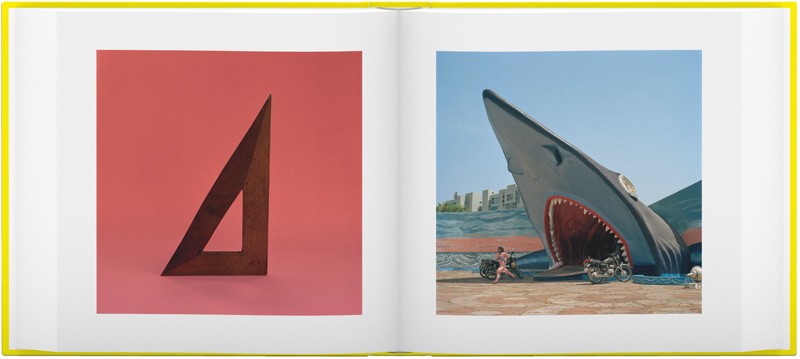
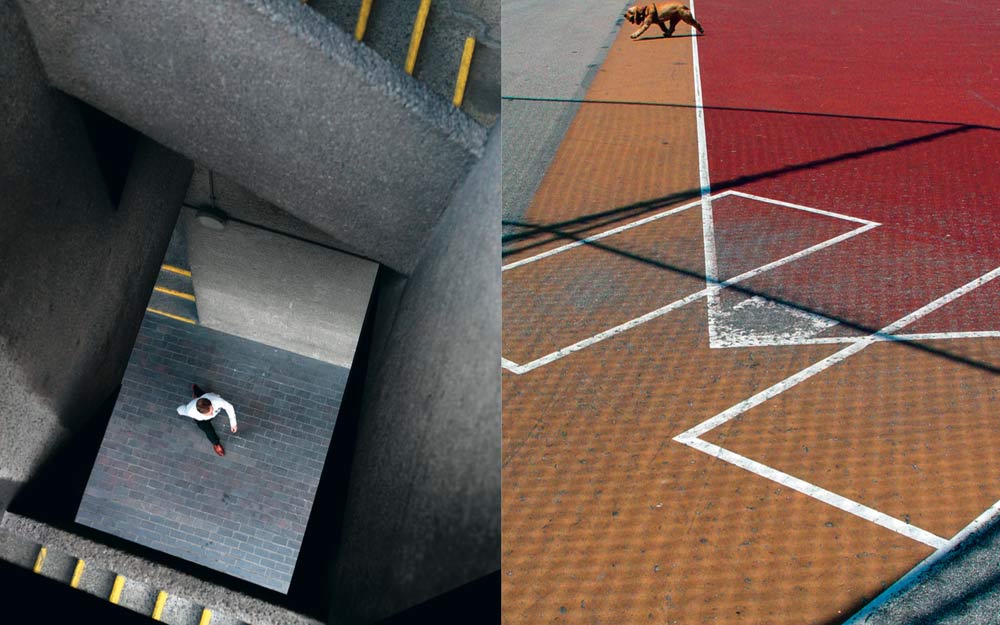
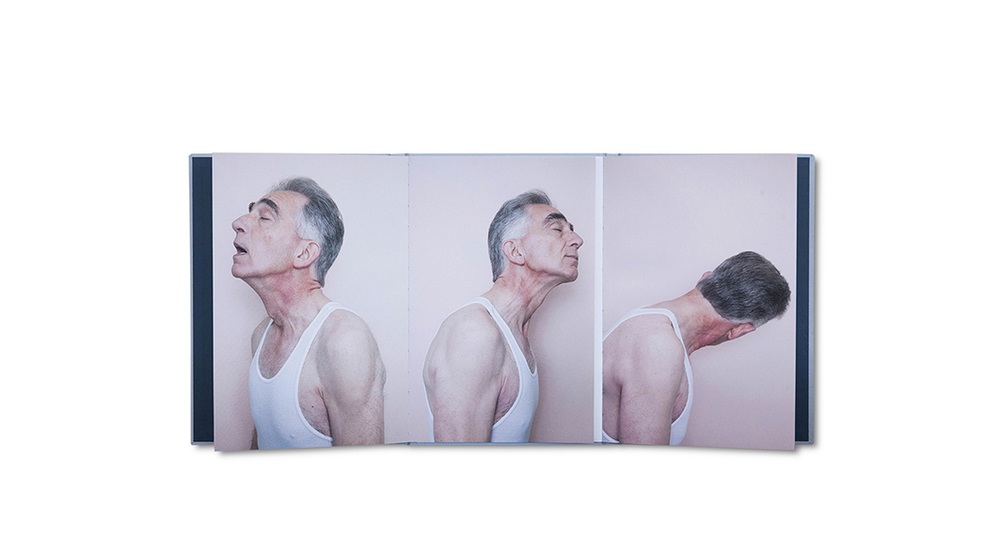
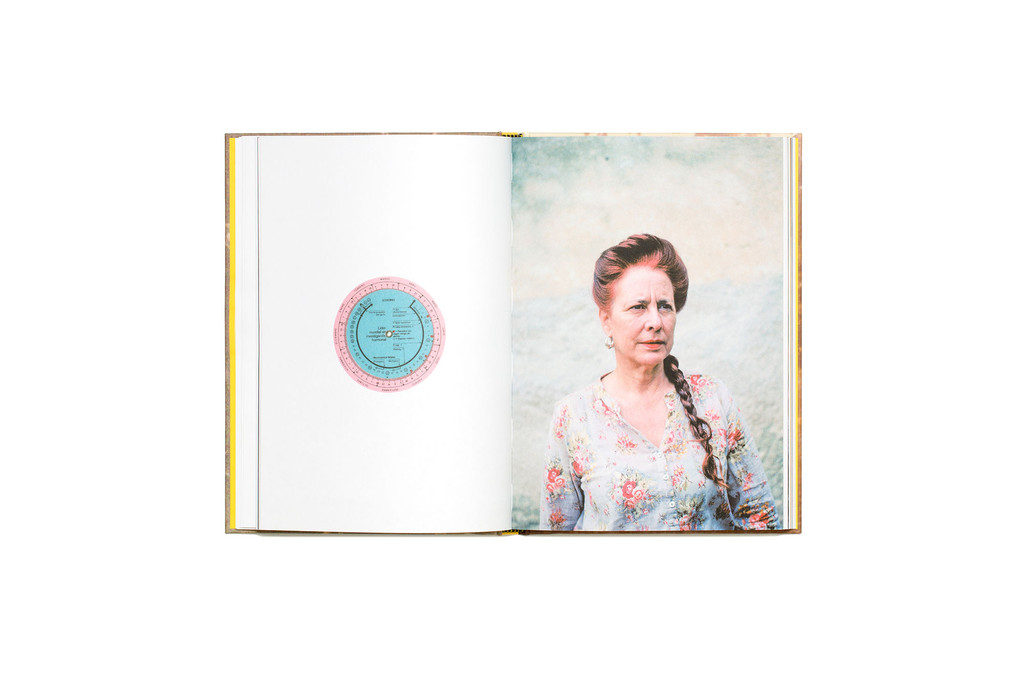




Week 2: 11 – 17 Sept
DESIGN & LAYOUT
Complete the following blog posts
RESEARCH > ANALYSIS
Research zines and newspaper design made by artists and photographer that will provide visual stimulus for your page design. Produce a mood board and consider the following in your analysis:
- How you want your design to look and feel
- Format, size and orientation
- Narrative and visual concept
- Design and layout
- Rhythm and sequencing
- Images and text
- Title and captions
InDesign
Create new document
width: 148mm
height: 210
pages: 16
orientation: portrait
columns:2
column gutter: 5mm
margins: top, bottom, inside, outside: 10mm
bleed: top, bottom, inside, outside: 3mm

Something to read: Something Tactile: Why Photographers Should Create Zines
Café Royal Books is a small independent publisher of photography photobooks or zines, and sometimes drawing, solely run by Craig Atkinson and based in Southport, England. Café Royal Books produces small-run publications predominantly documenting social, historical and architectural change, often in Britain, using both new work and photographs from archives. It has been operating since 2005 and by mid 2014 had published about 200 books and zines and they are held in major public collections
https://www.caferoyalbooks.com/

Editions Bessard is a paris-based independent publishing house created by pierre bessard in 2011. Focusing on working with artists, writers and curators to realise intellectually challenging projects in book form.


The new imprint Éditions Emile is named in honour of Emile F. Guiton, the founding father of the The Société Jersiaise Photographic Archive. The first set of publications is a series of small photo-zines comprising of 48 pages with an average of 30-40 images and a short text providing further context. With plans to publish three editions annually, each issue of ED.EM. will take a fresh look at a specific collection within the archive, by pairing it with either another collection or contemporary work, in order to re-contextualise the images, keeping the collections active and relevant for new audiences both in the island and beyond.
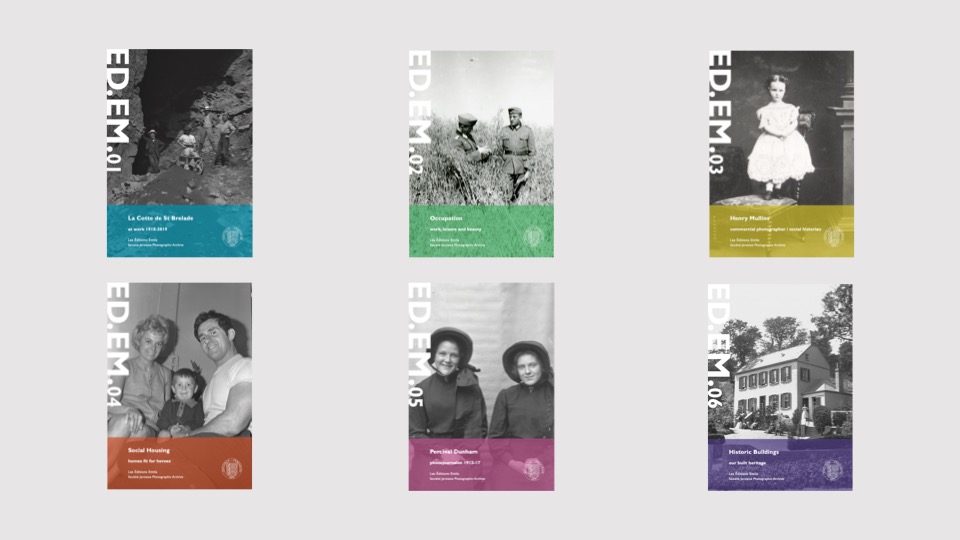
DEVELOPING > Show variation of design
- Create 2-3 examples of alternative layouts for your photo-zine using Adobe InDesign and complete a visual blog post that clearly shows your decision making and design process using screen-prints.
- Make sure you annotate!
See examples of previous students blog charting his zine design process, here.
https://hautlieucreative.co.uk/photo20al/wp-admin/post.php?post=31481&action=edit
PRESENTATION > EVALUATION
Print, fold and bind final photo-zine and hand in for assessment.
Write an overall final evaluation (250-300 words) that explain in some detail how successfully you explored narrative as part of NOSTALGIA producing magazine page-spreads and photo-zines using both traditional eye/ camera and new technology such as generative AI. Consider the following:
- Did you realise your intentions?
- What did you learn?
- Zine/ page-spreads; including any contextual references, links and inspiration between your final design and theme, incl artists references.
Week 3: 18 – 24 Sept
RESEARCH & PLANNING
Film: Elizabeth Castle
Complete the following blog posts
NOSTALGIA is often linked with the past and Jersey is an island obsessed with its unique history and heritage. The site of Elizabeth Castle is such an example, and it offers up many creative possibilities for constructing a photographic story based on historical research and new recorded material, such as still-images, moving images and sound. Your task in the next four weeks is to produce a short film of 2-3 minutes based on a narrative that you have constructed from over a 1000 years of rich history of Elizabeth Castle or in Jerriais, Lé Châté Lîzabé.

Your film will be a visual feast made of footage from a combination of still-images and/ or moving images (video). Part of your creative challenge is developing a sound scape made from original audio recordings on site. For the film production you can choose to work alone or in a group of 2-3 students.
This element of the film will be supported by a series of workshops by Sam Hills, a Hautlieu alumni and sound designer who completed a degree in Audio & Music Production at Buckinghamshire New University in 2020. He will be assisting us on location at Elizabeth Castle on Wed 27 September and also come into school/ classroom and deliver/ assist with editing your audio in post-production and help developing your sound scape.
Here a few students films from the past…
TASK: Produce a number of appropriate blog posts.
1. RESEARCH: Elizabeth Castle and decide which particular aspects of its 1000 year history you wish to make into a short film of 3-5 mins – see below. Gather together research material, such as images, maps, documents, links to online sources and write a short synopsis of 300-500 words.
– Hermitage where St Helier is thought to have lived around 550 AD and a priory with about 6 monks.
– 16th century fortress against French invaders.
– Home to Royal exile Charles II during English civil war.
– Construction of a two-story barracks hospital in the early 19th century.
– Nazi occupation in 1940-45 where 100 German soldiers lived in Elizabeth Castle
– Construction work on bunkers carried out by forced workers from Russia and other countries.
– Post-war tourist attraction, current site of Jersey Heritage and living history.
2. VISUALS: Produce a mood-board of images that will inspire your visual language, style and aesthetic of your film. That can include found images of Elizabeth Castle and any other visual material, such as still-images from other filmmakers and films. See film, La Jétte by Chris Marker below.
3. STORYBOARD/ SHOT LIST: Develop a storyboard or a shot list that provides you with a clear plan ahead of how you wish to make your 3-5 mins film, including shot sizes, camera angles, movement, lighting, individual scenes and mise-en-scene (the arrangement of the scenery in front of the camera) from location, props, people, lighting, sound etc.
A storyboard or shot list is a graphic layout that sequences illustrations and images with the purpose of visually telling a story. Filmmakers and video creators use storyboards to transfer ideas from their mind to the screen. Creating an effective story board takes skill, but you can learn from storyboard examples to gain some pro tips. Read more here about differences between Storyboard and Shot list. See more examples of story boards here.


Download storyboard template here:

More information about shot sizes here

Camera-angles: see here
Camera movement – read more here
In a storyboard, each shot will have a small section for brief text description. In this description, clarify what camera movement will be used in the shot.
The most fundamental camera moves are the zoom shot, camera pan, tilt shot, dolly shot, tracking shot, or pedestal. Of course, these are only a few types of camera movement.
MISE-EN-SCENE
Mise en scene plays a huge role in communicating the tone of a story — but what is mise en scene? In classical terms, mise en scene is the arrangement of scenery and stage properties in a play or film. Today, mise en scene is regarded as all of the elements that go into any single shot of a production. Click below to learn more about mise-en-scene
https://www.studiobinder.com/blog/mise-en-scene-elements-color-in-film/
Four of the most important aspects of mise en scene are: sets, props, costume/hair/makeup, and lighting. Here are examples from filmmakers Stanley Kubrick and Wes Anderson on how to apply color to these four aspects.
4. SOUND: Develop a sound design of audio files from various sources, such as original recordings from site at Elizabeth Castle (ambient sounds, directional sounds), sound FX, sound archives, Foley sounds recreated in the Hautlieu recording studio and other audio elements such as interviews, narration and spoken words, singing and music scores.
5. SCRIPT: Write a short script that provides a narrative of your film. This can include historical research and be constructed as a dialogue or narration to be recorded as a potential voice-over r in studio
6. ARCHIVE: The film must include archival material, ie. images, footage, maps, documents relevant to your film narrative and historical research – use online catalogues from Société Jersiase or Jersey Archive.
7. PRODUCTION: Assign roles and responsibilities within your group, such as producer, DP (director of photography), sound recorder, editor etc.
RESOURCES
Elizabeth Castle – A fortress just off the coast of Jersey to explore 400 years of history – built on a tidal Island in St Aubin’s Bay and dating from the 16th century onwards. Learn more here by visiting Jersey Heritage or Wikipedia
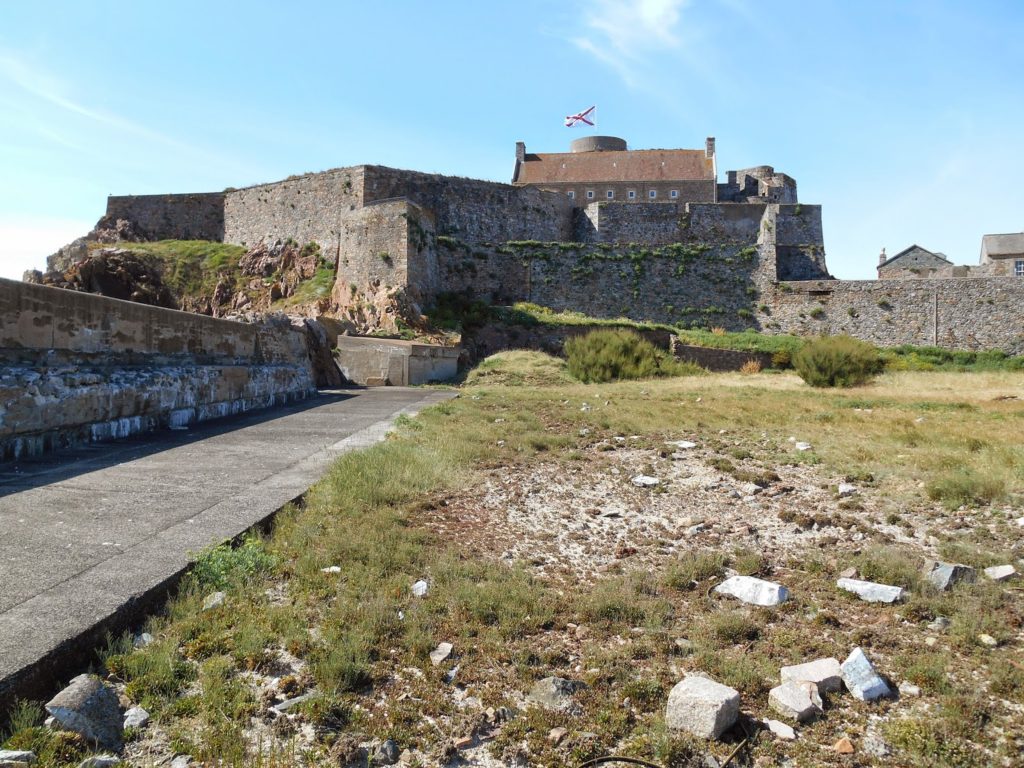
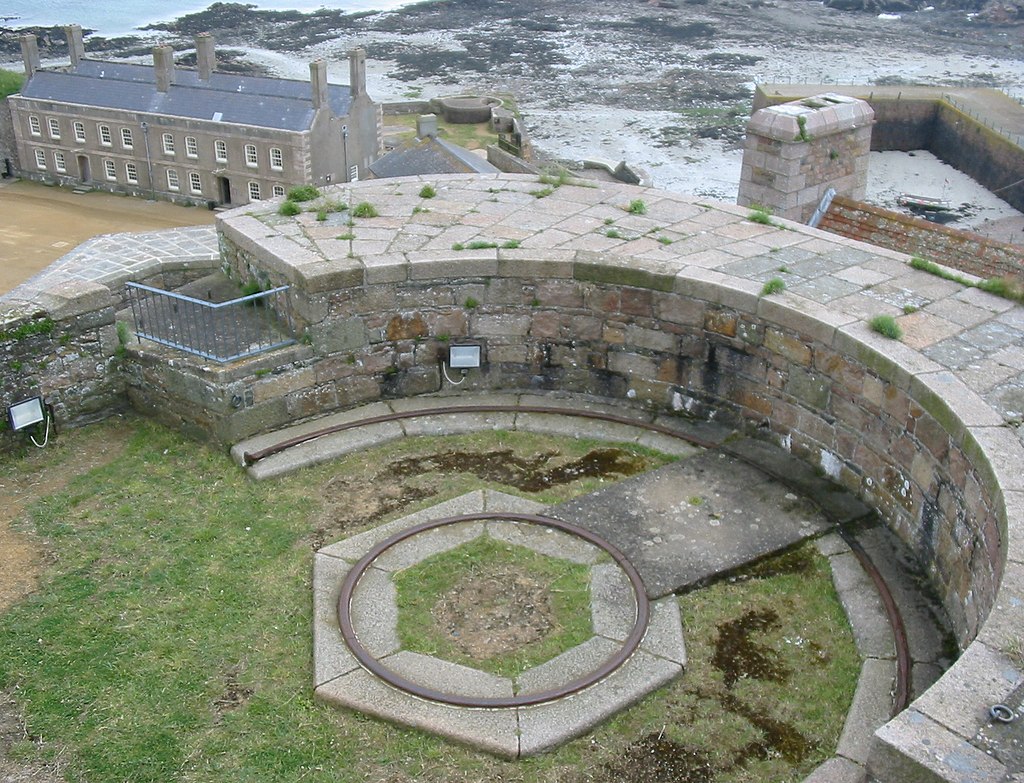







To reach the Castle and begin your adventure, walk along the causeway or take the amphibious Castle Ferry. Spend your day exploring this sprawling 15-acre fortress: climb the battlements dating back to the time Sir Walter Raleigh was Governor of Jersey; explore the grounds that gave refuge to King Charles II during the English Civil War; uncover the story of the Castle during the German Occupation in World War II; then discover the oldest part of this site, The Hermitage, where Saint Helier is thought to have lived around 550 A.D.
Step back in time to 1781 and meet the Castle Gunner who will tell you his story of the Battle of Jersey, but be prepared to be drafted into the Midday Parade and witness the firing of the musket and cannon.

Jersey Heritage is currently restoring parts of the Castle to bring them back into public use and you’ll see scaffolding around two important, historic buildings – the Georgian Military Hospital and the Officers’ Quarters.
This work is essential to secure the Castle’s future and you can find out more about what’s in store for the buildings here. For a detailed conservation plan of Elizabeth Castle done in 2005, click here


The Master Gunner will ensure that your backs are straight, your chins are high, and bellies are tucked-in as you stand to attention for the Midday Parade on the expanse of the Castle’s Parade Ground. Delight in the storytelling of the Gunner, who will enlighten you into the tales and mysteries of bygone times at the Castle, from the reign of Queen Elizabeth I to the Battle of Jersey in 1781. Then finally prepare yourself for the resounding bang of the signal gun and flintlock musket.
Read more on a Blog here about Elizabeth Castle or on Wikipedia here
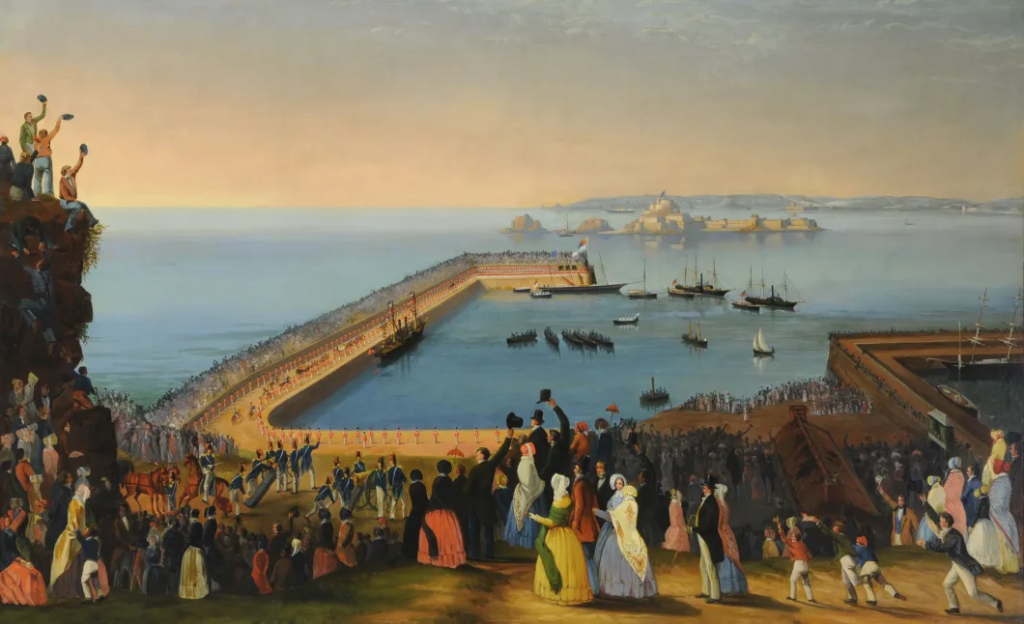
Philip John Ouless (1817–1885) Government House, Jersey
Historic Environment Record
The Historic Environment Record is a rich, publicly-accessible source of information about Jersey’s historic buildings, archaeological sites and finds spanning more than 250,000 years of human endeavour. New information is being added to the site all the time. Go to site here to learn more
The HER is also accessible in person. It is based at the Jersey Archive, the Island’s national repository of archival material and a key location for all reports on archaeological work and historic building recording carried out on the Island. This resource is available to a wide range of individuals, researchers, students and archaeologists. Jersey Heritage cares for the Island’s collections of archaeology, archives, art and social history, holding over 750,000 objects and documents.
Week 4: 25 Sept – 1 Oct
RECORDING > FILM: Elizabeth Castle
Complete the following blog posts
Mon-Tue > Chris Marker: La Jétte (1962)
Chris Marker, (1921-2012) was a French filmmaker, poet, novelist, photographer, editor and multi-media artist who has been challenging moviegoers, philosophers, and himself for years with his complex queries about time, memory, and the rapid advancement of life on this planet. Marker’s La Jetée is one of the most influential, radical science-fiction films ever made, a tale of time travel. What makes the film interesting for the purposes of this discussion, is that while in editing terms it uses the language of cinema to construct its narrative effect, it is composed entirely of still images showing images from the featureless dark of the underground caverns of future Paris, to the intensely detailed views across the ruined city, and the juxtaposition of destroyed buildings with the spire of the Eiffel Tower. You can read more here about the meaning of the film and watch the full version (29 mins) of the film here.
FILM AND NARRATIVE: Click here to learn more about conventions in film making and narrative theory with reference to the camera/ cinematography, sound and editing moving images.
Film Editing | 2021 Photography Blog (hautlieucreative.co.uk)

Wed 29 Sept and Wed 4 Oct – school trip
Société Jersiaise Photographic Archive and Elizabeth Castle
Location:
08:45: Meet at Société Jersiaise, 7 Pier Road, St Helier ready for 09:00 start. Students make their own way and must bring own camera, (with card and fully charged batteries), good footwear, appropriate clothing and provisions for lunch.
Activities:
WED 29 Sept
09:00 – 9:30: Presentation by photo-archivist Patrick Cahill about relevance of photo-archive showing examples of objects from the collection with reference to early photographic experiments as an introduction to the history and origin of photography.
09:30 – 11:00: Task 1: Students study literature from Lord Coutanche library about the history of Elizabeth Castle and make notes of relevant bits of text, quotes, and references they can use in developing their film script and narrative
Task 2: In groups students will work with set of images of Elizabeth Castle from different collections and construct a visual narrative through sequencing. Each group present.
11:00-12:00: Visit to exhibition: No Place Like Home
WED 4 OCT
11:15: Meet at West Park, St Helier where Duck vehicles is that will take us to Elizabeth Castle
12:00-13:30: Divide students into two groups
Group A: Sound recording workshop led by Sam Hills. Students will learn practical skills in recording sound using Digi recorders and variety of different microphones.
Group B: Students will be recording visuals, both stills-images and video footage relevant for their film
13:30-14:00: Lunch
14:00-15:30: Swap groups
15:30: Make our way from Elizabeth Castle to St Helier
Students make their own way home

This unit requires you to produce an appropriate number of blog posts which charts you project from start to finish including research, planning, analysis, recording, experimentation, evaluation, and presentation of creative outcomes.
HOMEWORK TASK
Essay: How are archives a repository of knowledge?
DEADLINE: TUE 17 OCT
To show knowledge and understanding of your experience day at the Société Jersiaise Photo-Archive you need to write an essay. Follow link and instructions here:
ARTHOUSE JERSEY No Place Like Home
Create a blog post that outlines our visit to the exhibition.
Include how and why it links to our theme of Nostalgia.
Choose an artist to provide more detail about their work, ideas and display methods
https://www.arthousejersey.je/

Week 5-6-7: 2 – 20 Oct
EDITING > DEVELOPING > PRESENTING > FILM
Complete the following blog posts
Organisation: Create new folder FILM on local VideoData drive on your computer. Download files from from camera card into:
Save still images into a sub-folder: STILLS
Save video clips into a sub-folder: VIDEO
Save audio files into a sub-folder: AUDIO
Still-images: Import still-images into Lightroom and create a collection Elizabeth Castle under project folder: NOSTALGIA. Edit and adjust images and export as high-res jpgs ready for import into Adobe Premiere
Moving-images: Import video clips into Adobe Premier and edit on the timeline. Show experimentation with cuts/ transitions/ duration. Adjust exposure, colour grading profiling….
SOUND WORKSHOP: Sam Hills
Go to this folder for shared audio files:
M:\Radio\Departments\Photography\Students\Image Transfer\NOSTALGIA\Audio files
Sound: Import audio files into Adobe Audition and edit on the timeline. Show experimentation with mixing audio files using…
Here is access to Sound Effect archives:
Hautlieu Media department:
M:\Radio\Departments\Media\Students\Sound FX
Free online websites
https://freesound.org
https://www.zapsplat.com
https://sound-effects.bbcrewind.co.uk
https://soundbible.com
https://www.freesoundeffects.com
Archives: You can find relevant material, such as images, maps and documents your visit to SJ Photo-Archive here, that you may wish to use in your film.
M:\Radio\Departments\Photography\Students\Image Transfer\NOSTALGIA\SJ Photo-Archive\Elizabeth-castle-images
FILM EDITING
Mise-en-scene > link to make blog post: Film Editing or MM’s old resources
Title and credits: Consider typography/ graphics/ styles etc. For more creative possibilities make title page in Photoshop (format: 1920 x 1080 pixels) and import as a high-res JPEG file into your project folder on the local: VideoData drive.
Export: Export film as mp4 file and upload to Youtube account and embed on Blog. Follow these steps:
- In Premier: Click on Sequence > Render IN/OUT
- File > Export > Media
- Export Settings: Format H.264
- Output Name: use title of your film and save to V:Data drive
- Click Export at bottom
- Using Microsoft Stream: Open up Office 365
- Go to All Apps and select Stream
- Create > Upload Video
- Browse to upload your exported film from V:Data drive
- Write a short description, choose thumbnail and publish
- My Content > Videos > embed film into Blog post with evaluation.
- In Youtube: Set up an account at home (www.youtube.com)
- Click Create (top right corner) > Upload video
- Select file > your exported film from V:Data drive
- Write a short description and choose thumbnail
- Once uploaded, embed film into Blog post with evaluation.
EVALUATING: Write an evaluation on the blog that reflects on you artistic intentions, film-editing process and collaborating as a group. Include screen-prints from Premiere and a few ‘behind the scenes’ images of the shooting and production.
DEADLINE: Wed 18 Oct
SCREENING: Thurs 19 Oct and Fri 20 Oct (with popcorn)
Prepare a short presentation of your film with Q&A.
DO NOT USE WHAT IS BELOW THIS DIVIDING LINE
Week 8: 23 – 27 Oct
PRINTING > PRESENTING
Complete the following blog posts
Mount up any prints
FINAL PRINTS IN WEEK 8: 23-27 OCT
H-TERM: 28 OCT – 5 NOV
WEEK 9: 6-12 NOV
THEME: NOSTALGIA – use in PS
Based on the theme of NOSTALGIA plan a series of relevant photoshoots (at least 3-5) in the next couple of weeks that provide you with new visual material/ images for a 2-3 minute short film.
PERSONAL STUDY: In this unit/ module it is paramount that you explore the theme of Nostalgia in a personal and unique manner linked to childhood memories.
PHOTO-ASSIGNMENT
use together with photo-assignment on 3 images that are real and 3 that are staged + make a link to Windows and Mirrors > CONTEXT: For further understanding and context of the historical, conceptual and aesthetic differences between documentary practice and tableaux photography click on the links below and read the following chapters.
Thurs-Fri > Based on the theme of NOSTALGIA plan a series of relevant photoshoots and produce 3 images that are documenting reality and another 3 images that are staging reality. Use either camera or AI technology, or a combination at free will. The focus here is on creativity and experimentation, for example:
Revisit the sites of your childhood experiences – the places you played, argued, got hurt, felt loved. Photograph these places, carefully selecting your point of view and composition. What will you include? What will you leave out? How will you present these images to the viewer? With or without accompanying text? In a grid or a linear sequence? In a book, slideshow or on the wall? What difference do these decisions make to the meaning of your images?
You could choose sites or locations which triggers childhood memories, for example beaches/ castles/ heritage sites/ bunkers/ home/ gardens/ family gatherings/ playing or hanging out with friends. Some of these sites could be Jersey landmarks, such as Corbiere Lighthouse, Gronez Castle, Mt Orgueil, Elizabeth Castle, Fort Regent, St Ouen’s Bay, L’Etacq, St Brelade beach, Plemont, Ann Port, Rozel Bay, Bouley Bay, Bone Nuit, Gorey Pier, St Helier harbour, People’s Park, Jersey Zoo etc.
DOCUMENTARY vs STAGED PHOTOGRAPHY
When we begin to make work in response to REBELLION in the second half of this autumn term we will be experimenting with a different way to construct narrative using a staged approach to photography within the tradition of tableaux, as well as creating a series of self-portraits.
All texts from Bate, David (2016), Art Photography. London: Tate Publishing
New approaches to documentary in contemporary photography
David_Bate_The_Art_of_the_Document
On rise of Tableaux in contemporary photographic practice David_Bate_The_Pictorial_Turn
Also read and look through both these PPTs to get a basic understanding of Documentary vs Tableuax
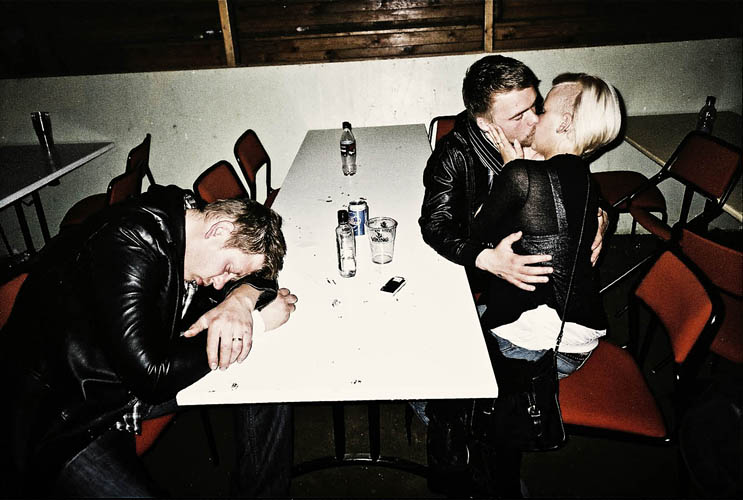
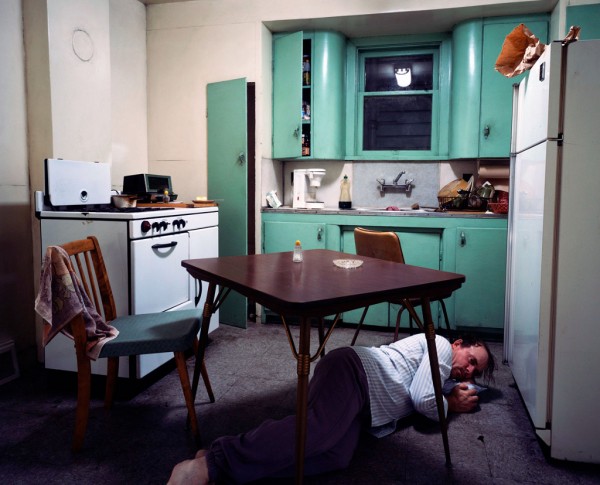
Documentary vs Staged Photography
If we examine documentary truth (camera as witness) versus a staged photograph (tableaux photography) all sorts of questions arise that are pertinent to consider as an image maker. Remember our discussion we had at the beginning of September when we began module of Documentary and Narrative. We discussed a set of images submitted at the World Press Photo competition on 2015.
Read my blog post again: Standards and Ethics in Documentary


Link to article about controversial images made by Giovanni Trioli at this years World Press Photo context
Since then the debate surrounding what constitutes ‘documentary’, ‘truth’, ‘veracity’ and how much manipulation is accepted has raged within various bodies representing documentary photography and photojournalism.
Read here the new Code of Ethics, revised rules and detailed guidance to ensure ‘truth’ of entries for the WPP contest 2016 by its Managing Director, Lars Boering. Read further interview with Boering here in an article in the BJP
Mon: CONTEXTUAL STUDY > Documentary vs Tableaux (staged photography) > 1 blog post.
Describe the genres of documentary photography and tableaux photography and highlight the differences/ similarities in the approach of the image-making process. For example: What do we mean by a photograph that is ‘documentary’ in style. How does a staged tableaux image construct a narrative different from documentary photography?
RESOURCES > First, Look through both these PPTs to get a basic understanding documentary photography and tableaux photography.


To develop a deeper understanding, read these two texts by David Bate from his book, Art Photography (2016) Tate Publishing. Include images to illustrate both genres of photography and show evidence of reading by including direct quotes from sources and referencing using Harvard system.
New approaches to documentary in contemporary photography David_Bate_The_Art_of_the_Document
On rise of Tableaux in contemporary photographic practice David_Bate_The_Pictorial_Turn
EXTRA READING:
For a contemporary perspective on documentary practice read photographer, Max Pincher’s Interview: On Speculative Documentary To read this interview you must access it online from home as it is blocked the internet filter in school.
Bate D. (2009) ‘Documentary and Storytelling‘ in The Key Concepts: Photography. Oxford: Berg
Bright S. (2005) ‘ Narrative‘ in Art Photography Now. London: Thames & Hudson
ARCHIVES
Archives can be a rich source for finding starting points on your creative journey. This will strengthen your research and lead towards discoveries about the past that will inform the way you interpret the present and anticipate the future. During this term we had planned for us to visit two public archives, first the Société Jersiaise Photographic Archive which contains over 100,000 items dating from the mid-1840s to the present day and is the principal Jersey collection of nineteenth and early twentieth century photography. The second was Jersey Archive that has collected over 300,000 archival records and is the island’s national repository holding archival material from public institutions as well as private businesses and individuals, including important photographic collections such as Jersey Evening Post and many of the iconic images of Surrealist artist and activist, Claude Cahun, who we will be studying in depth as part of the theme REBELLION. However, due to current restrictions on school trips we will instead explore their archives and resources online and postpone visiting the institutions.




OVERVIEW
In the first four weeks we will be exploring the theme of LOVE and your task is to produce a 16 page photo-zine based on A LOVE STORY. What and whose love story you wish to tell in a series of images is entirely up to you. It could be based around a love story in your family. For example, your grandparents, parents, siblings or other relatives, such as distant uncles, aunties, cousins whose stories about love (both finding it and loosing it) that you may have been told around dinner tables or family gatherings. Stories that might be true or false, or based on facts that over time has been fictionalised and become family lore or myth.
Love can also be found among friends or take inspiration from personal experiences of teenage love. A love story could also be about unrequited love, or falling out of love with someone. However, a love story does not have to include romance. People love each other without desiring. It could be felt beyond the physical to include a spiritual connection. Some people talk about having found a soul mate. What does this actually mean? How could you translate this into a visual narrative and begin to make photographic responses?
A love story could also be about someone ‘loving’ one particular thing or aspects of their life, such as a love for an animal, hobby, sport or nature.
In this module we will study how different narrative structures can be used to tell stories in pictures from looking at photography, cinema and literature in photo-essays, film and books. We will consider narrative within a documentary approach where observation is key in representing reality, albeit we will look at both visual styles within traditional photojournalism as well as contemporary photography which employs a more poetic visual language that straddles the borders between objectivity and subjectivity, fact and fiction.
For each introduction to the themes of LOVE & REBELLION there will be two photo-assignments for you to complete independently in your own time outside of lessons. This is partly to train your eye, improve camera skills and to encourage you to make images and photographic responses on a weekly basis. This is vital in your development as a photography student and essential for your final year of A-Level Photography which will require you to work on projects over a much longer period. The programme of study is designed with specific tasks to be completed in lessons as well outside of the classroom. The expectations of a A-level student at Hautlieu School is 5 hours of independent study at home per subject each week.
We will encourage you to achieve the highest possible marks, but this will entail a sense of discipline and effort on your part. We want you to produce original work of high quality and maturity that can be awarded top grades. Historically, photography students at Hautlieu School have acquired a reputation for making work beyond the confines of Edexcel syllabus and their work have been recognised both locally and internationally through exhibitions, competitions and publications. For example, in the last couple of years we have produced two separate newspaper supplements, FUTURE OF ST HELIER and LIBERATION & OCCUPATION both published and distributed in the Jersey Evening Post. If funding can be found it is our hope that we would be able to produce yet another newspaper and successfully complete a trilogy.



PLANNER
Download LOVE & REBELLION PLANNER and use it weekly to help you with monitoring and tracking your own progress
PHOTO-ASSIGNMENTS
INDEPENDENT STUDY: HOMEWORK
PHOTO-ASSIGNMENT 1: A portrait of someone you love
Environmental Portrait
Candid portrait
DEADLINE: Mon 14 Sept
ENVIRONMENTAL PORTRAIT: A formal portrait with emphasis on environment and setting of the model that may suggest the person’s social, economic, cultural background.


Week 1-4: 6-28 Sept
Practice: Still-life, 3D Photo-sculpture and Installation
Theory: History of Still-life as a genre in art
DEADLINE: Wed 28 Sept
EXHIBITION: MY ROCK
Link Gallery 1- 9 Oct, Jersey Museum
Week 1: 7-13 Sept
Complete Zine making on migrant communities
Before we begin our next creative phase we need to complete our 16-page zine. Follow these instructions and complete the following blog posts:
- Images > new photographic responses, photo-shoots
- Archives > old photos from family albums, iPhone images from family photo-albums, camera phone, SJ photo-archive, found imagery…
- Texts > letters, documents, poems, text messages
DESIGN & LAYOUT
RESEARCH > ANALYSIS: Research zines and newspaper design made by artists and photographer that will provide visual stimulus for your page design. Produce a mood board and consider the following in your analysis:
- How you want your design to look and feel
- Format, size and orientation
- Narrative and visual concept
- Design and layout
- Rhythm and sequencing
- Images and text
- Title and captions
InDesign – document set-up
Create new document
width: 148mm
height: 210
pages: 16
orientation: portrait
columns:2
column gutter: 5mm
margins: top, bottom, inside, outside: 10mm
bleed: top, bottom, inside, outside: 3mm
EXPERIMENT & DEVELOP
- Create 2-3 examples of alternative layouts for your photo-zine using Adobe InDesign and complete a visual blog post that clearly shows your decision making and design process using screen-prints.
- Make sure you annotate!
See examples of previous students blog charting his zine design process, here.
https://hautlieucreative.co.uk/photo20al/wp-admin/post.php?post=31481&action=edit
PRINT & EVALUATE
Print, fold and bind final photo-zine and hand in for assessment.
Write an overall final evaluation (250-300 words) that explain in some detail how successfully you explored the first part of the IDENTITY & COMMUNITY project. Consider the following:
- Did you realise your intentions?
- What did you learn?
- Zine; including any contextual references, links and inspiration between your final design and theme, incl artists references.
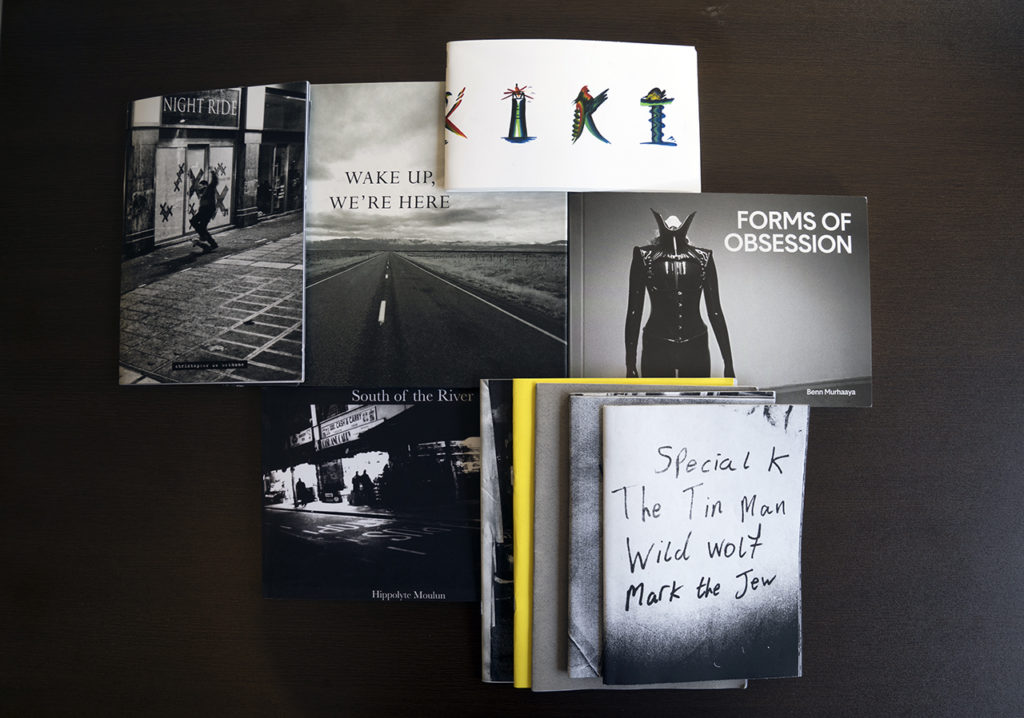
Before we begin our next creative phase we need to make sure you have chosen your best photo-collage/ joiner and saved in this folder below for our upcoming exhibition at the Link Gallery, Jersey Museum.
Deadline Fri 16 Sept.
M:\Radio\Departments\Photography\Students\Image Transfer\PRINTING – JOINER\A3
PERSONAL STUDY: NOSTALGIA
Our focus this term is narrative and story telling in photography – see old blog for copy
We will continue to explore the theme of NOSTALGIA with a specific focus on childhood memories.
This is linked to family history and research – see my blog copy on that
Windows and mirrors
extend zine-making into creative versions – see Lewis Bush guide
Moving image: make an animated giff and 2-3 mins film
Sound recording workshop by Sam Hills – linked to visit to SJPA
or
SJPA + zine making – must include archival material – family!! (see your old blog post on HOME photo-assignments = environmental portrait etc
Site visit (Elizabeth Castle) + sound recording workshop with Sam
EXTRA
Week 7: 12 – 18 Oct
INSPIRATIONS & INFLUENCES
Complete the following blog posts
RESEARCH > ANALYSIS
THEORY & CONTEXT: Write 300-500 words expressing your view on identity politics and culture wars. How does it impact society? Describe some of the positive aspects on groups harnessing their shared identity and political views as well some of the dangers of tribalism dividing communities. Provide examples both for and against, reference sources used and include images. Try and frame the debate both within a global and local perspective.
PROTESTS & MOVEMENTS: Research political activism of the Suffragettes as well as the artistic movement of Dadaism. Describe each of their political ideologies and analyse what role photography played and how it was used as a propaganda tool. Make references to contemporary activism and movements, such as FEMEN, #meToo, BLM etc.
ARTISTS REFERENCES: A comparative study between Claude Cahun and a contemporary photographer. Analyse, describe and discuss similarities and/or differences between key examples of their work on political activism and gender identities. Follow these steps:
1.Produce a mood board with a selection of images and write an overview of their work, style and approach to self-portraiture.
2.Select at least one image and/or video from each artists and analyse in depth using methodology of TECHNICAL>VISUAL>CONTEXTUAL>CONCEPTUAL
3.Incorporate quotes and comments from the artists themselves or others (art critics, art historians, curators, writers, journalists etc) using a variety of sources such as Youtube, online articles, reviews, text, books.
4.Make sure you reference sources and embed links to the above sources in your blog post.
5.Plan a photographic response that links with your 90 SEC FILM ASSIGNMENT
Week 8: 19 – 25 Oct
PLANNING & SPECIFICATION
Complete the following blog posts
PLANNING > PITCHING: 90 SEC FILM: A moving-image response in relation to the theme of REBELLION engaging with politics that are based on art, identity or culture.
• In groups of 2/3 students present idea and concept for your 90 sec film as a poster and manifesto.
• You have 30 mins to put together your poster and will have 30 seconds to present and pitch your idea to the class. Use Photoshop to design your poster and publish on the blog as a JPEG.
• Photo-game: You must use 3 words from ‘throwing the dice’ and incorporate into your manifesto and use those concepts as creative starting points for making your film.
FILM MANIFESTO
- THEME: Rebellion
- SUBJECT: art, identity, politics, authority, propaganda
- INTENTIONS: including 3 dice words from photo-game
- VISUALS: how the film will look – incl. inspirations from artists, film makers, movements etc
- SOUND: consider audio, such as interviews, ambient sound, sound effects, music
- TITLE: possible titles of film
- ROLES: producer, photographer, editor
How to write a manifesto? Read more here
A manifesto is a statement where you can share your…
– Intentions (what you intend to do)
– Opinions (what you believe, your stance on a particular topic)
– Vision (the type of world that you dream about and wish to create.
For more context and information click here on a How to Make a Manifesto

STORYBOARD: Develop the above manifesto into a storyboard that provides you with a clear plan ahead of how you wish to make your 90 sec film, incl. individual scenes, shot sizes and mise-en-scene (the arrangement of the scenery in front of the camera) from location, props, people, lighting, sound etc.
download storyboard template here
Week 9-10: 26 Oct – 13 Nov (incl H-TERM)
RECORDING > EDITING
Complete the following blog posts
RECORDING > H-TERM: Plan and complete principal shoot following your storyboard during h-term. Make sure you take a few images behind the scenes of the production and are using the right equipment; camera, sound recorder, tripod etc.
EDITING > FILM PRODUCTION
Still-images: Edit and adjust using Lightroom and export as high-res jpgs ready for import into Premiere
Moving-images & Sound: Upload clips into Premier and edit on the timeline. Show experimentation with cuts/ transitions/ duration etc.
Title and credits: Consider typography/ graphics/ styles etc. For more creative possibilities make title page in Photoshop (format: 1280 x 720 pixels) and import as a Psd file into your project folder on the V-Data drive.
Export film as mp4 file and uploads to Youtube account and embed on Blog. Follow these steps:
- In Premier: Click on Sequence > Render IN/OUT
- File > Export > Media
- Export Settings: Format H.264
- Output Name: use title of your film and save to V:Data drive
- Click Export at bottom
- Using Microsoft Stream: Open up Office 365
- Go to All Apps and select Stream
- Create > Upload Video
- Browse to upload your exported film from V:Data drive
- Write a short description, choose thumbnail and publish
- My Content > Videos > embed film into Blog post with evaluation.
- In Youtube: Set up an account at home (www.youtube.com)
- Click Create (top right corner) > Upload video
- Select file > your exported film from V:Data drive
- Write a short description and choose thumbnail
- Once uploaded, embed film into Blog post with evaluation.
Job done!
EVALUATING > SCREENING: Write an evaluation on the blog that reflects on you artistic intentions, film-editing process and collaborating as a group. Include screen-prints from Premiere and a few ‘behind the scenes’ images of the shooting/ production.
DEADLINE: Fri 13 Nov
SCREENING: Mon 16 Nov (with popcorn)
Prepare a short presentation of your film with Q

